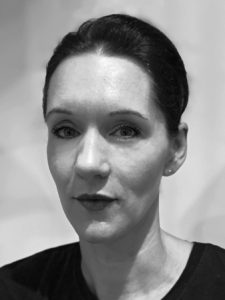March 21/22, 2024, Lucerne University of Applied Sciences and Arts
Introduction | Programme | Registration
Gonzalo Rodriguez, Ronin – Fictive deixis for an homage to Cantagallo
In Shipibo-Konibo mythology, a ronin is a giant snake that changes size and appears to people as a river or landslide. It is also associated with the creator of all Amazonian peoples, or ‚Yacumama‘, the mother of water and rivers. Such mystical knowledge is still alive and productive, far from the natural exuberance of the Amazon jungle, among the Shipibo of Cantagallo, a human settlement on the arid and polluted banks of the Rimac River in Lima. Deixis, on the other hand, is a relational concept derived from the Greek word for reference. In linguistic terms, deixis occurs when words must be referred to a specific context in order to produce meaning. Drawing on Viveiros de Castro’s Amerindian Perspectivism – which takes an ontological approach to the cosmological deixis of several Amazonian indigenous cultures – this presentation is structured as an audiovisual essay in which I outline a playful methodology for filmmaking and artistic research into Cantagallo’s urban cosmology. The essay will follow the mutable forms of the ronin, subsumed in forms of fictive deixis, and their aesthetic possibilities as cinematic narrative techniques. Discursively, the essay will explore the differences and coincidences between the Shipibo-Konibo concept of the ronin -flowing and transforming everything around them – and Viveiro de Castro’s interpretation of Tupi-Guarani subjectivity as an interplay of points of view that perceive and are perceived by a multiplicity of subjectivities. In this sense, filmmaking is proposed as a creative methodology that experiments with an ontology of different perspectives, in which the film becomes dehumanised, animalised or objectified, depending on the perspective from which it is perceived.
Justyna Kabala, A Message from Migrant Workers: on transnational collaborative filmmaking
This paper presentation will discuss practice-based approaches to community building through collaborative filmmaking, framing storytelling around migration as a form placemaking. Reflecting on a transnational filmmaking project conducted during 2021 and 2022 between London and Hong Kong. The paper will focus on the potential and the challenges of remote creative collaborative process, whilst examining what shared authorship means in collective knowledge production.
The paper presentation will be accompanied by a screening of the collaborative short film ‘A Message from Migrant Workers’, an experimental, animated documentary produced in collaboration with five Filipino artists who work as domestic workers in Hong Kong. Conducted through a series of online film-writing workshops, the collaborative process culminated not only in the production of the film, but also continued as a series of screenings and talks in Hong Kong, the Philippines and internationally.
Looking in depth at collaborative filmmaking, bringing together the perspectives of the five film co-directors and screening audiences, and considering the life of a film from its inception throughout its dissemination, this paper aims to frame moving image as an inherently collaborative endeavour.
Tamara Zumbühl, Untanglement of the Meshes (Part 1)
Untanglement of the Meshes (Part 1) is an experimental arrangement of an adaptation of the experimental film (single-channel film) Meshes of the Afternoon by Maya Deren and Alexander Hammid (1943) into the spatial environment of a multi-channel video installation. In the original film by Deren and Hammid, dream-like scenes are repeated several times in slightly different ways and play with recurring symbolic elements such as a flower, a key, and a knife.
Untanglement of the Meshes (Part 1) takes the slightly different repetitions of certain scenes and installs them in a new, spatial structure by placing them simultaneously next to each other on three screens. The screens can be moved around within the installation, allowing viewers to create their own specific set-up and thus also create a new narrative with the existing film material.
Christina Zimmermann, Polyphonic Authorship – Spatial Adaptation of a Referencing Writing Style in Virtual Worlds
In the writings of the film theorist, writer, and sociologist Siegfried Kracauer – as in the work of many other authors at the beginning of the 20th century – a multitude of voices were skilfully woven into a literary narrative or a scientific argument. The direct and indirect quotations are only selectively identified and serve, among other things, the authors‘ own positioning in contemporary intellectual discourse and cultural-political or personal interests related to their immediate circle of friends.
In this lecture, I will give an insight into the work-in-progress state of our interactive virtual reality experience The True Film, which introduces Siegfried Kracauer and his wife and collaborator Elisabeth Kracauer in the context of a biographical narrative and seeks to adapt their referencing writing style. Our experiments in the field of multimodal perception in a narrative situation with the sources in hands‘ reach – with spatial design, animated typography, and recitations from letters or books – go beyond practical questions, for example about legibility in VR and attention control, and embark into a media archaeological excursion into medieval sacred liturgy. What do these staging practices of secondary narrative instances – the reciting medieval priest just as the quoting scientist or writer – tell us beyond dramaturgical inspiration about aesthetic and epistemological techniques of establishing credibility, originality, and identity or subjectivation?
Ilja Mirsky, Dramaturgies of Attention
In a digitalized reality, the attention economy is of central importance for the reception of digital content. Advancing digitalization has fundamentally changed the screen as a medium. This also influences dramaturgical and conceptual approaches. «Dramaturgies of Attention» emphasizes the potential of cross-media narratives in the context of intermedia artistic formats. A special focus is placed on spatial, performative, and cognitive science findings for dramaturgical intersections with digital technologies. Emphasis is placed on the role of the human body as an interface between the physical, real environment and the personalized visual elements integrated into augmented reality (AR). The continuous miniaturization of screens and the merging of virtual and non-virtual visual narrative levels have led to a change in perception and attention control, reducing the reception of visual content to a subjective level. Media philosopher and communication scientist Vilém Flusser sees «virtualization as an opportunity for new ways of constructing and designing spaces.» He emphasizes that there is no clear distinction between real and virtual spatial experiences. This approach makes it possible to ask the question of how physical movement sequences carried out by a performer in virtual environments are received. The importance of the body as a link between different realities will be emphasized. This calls for the necessity of an interdisciplinary approach to researching dramaturgical concepts in a digitalized reality.
Jozef Masarik, Bodily InFormatics
The perception of one’s own body is based on mental body-representations. Replacing the mental representations by meticulously crafted fictional body-images in AR or VR, neuroscientists are scrutinizing the relationship between the self and embodiment. Within the experiments, subjects disown their biological bodies and transfer their perceived embodiment into other bodies, body-like objects or virtual avatars. The speculative practice has its validity in the truth production process and leads to fundamental redefinitions of the bodily self.
Studying the experiments form spatial perspective, we can speak about deformations of the virtual space. These deformations, however, do not result from the code of the experience in AR or VR, they result from the shift in the perceived embodiment. They are purely dependent on the body in virtual space. It is the virtual embodiment and ist properties that inform virtual space independently from the code. The body can scale the space, bend it, create novel systems of axes and link them in ways that distinguish such space from the euclidean. Through critical re-enactments of neuroscientific experiments and their adaptations focusing on the relationship between virtual embodiment and virtual space, practice-based research opens questions about the body’s constitutive singularity.
Isabella Pasqualini, fluctuating material / unstable truth
fluctuating material / unstable truth are the two faces of the same object oscillating between perception and reality. Perception, on which human consciousness – and sense of reality – are grounded, is not a stable process. The psychologist William James described consciousness as a fluctuating material at its best. Therefore, our constant perception of reality can be considered an unstable truth. A perceptual dilemma between consciousness and reality comes into play when we decide about our behavior and its environmental impact. During this subjective process, current trends in media support the idea of an unstable truth beyond our subjective grasp.
fluctuating material / unstable truth is an art-sci project about practices connected to the animated environment that surrounds us and owns a self. The project explores and bridges notions of human consciousness in Western theory, in analogy to practice, for instance, in natural philosophy and folklore. Western literature has an ambivalent stance toward the assumption of an animated environment or a conscious self existing outside of human presence, and few authors include the possibility of a collective consciousness. For instance, in the essay Identity and Difference, John Locke proposed that plants, machines, the mineral world, animals, and humans share a collective consciousness. The historian Carlo Ginzburg has claimed that believing in an animated environment is the basis of human understanding across Central Europe. fluctuating material / unstable truth aims to bridge contrasting perceptions and realities by proposing episodes in which the fragility of human reality and its unstable truths are exposed within a biofeedback-augmented space. How can we expand our subjective sense of reality by accepting that our consciousness is only fluctuating material provided by unstable truths?
Julia Dufek, Beyond Vision – A Holistic Investigation into Three-Dimensional Creation Processes
Digital tools revolutionize our approach to learning, designing, and teaching 3D art creation. While software and hardware emulate traditional analogue processes, novel digital realms emerge. However, a disparity exists between analogue and digital 3D techniques. Figurative sculpture and stop-motion animation offer spatial, haptic immersion, whereas their digital counterparts—like digital sculpting and 3D computer animation—unfold in two-dimensional interfaces. In this context, intrinsic three-dimensional processes appear normalized as two-dimensional.
This paper delves into the mechanisms enabling three-dimensional art creation and how artists harness them. Drawing from philosophy, anthropology, and embodied cognition, we explore perception rooted in intentional motility. Art didactics reveal a consistent pattern: artists skillfully direct their perception during dynamic acts of creation, maintaining a continuous flow of movement and perceptual engagement.
To provide an artistic lens, we introduce an «ana-digi-log-ital» photogrammetry interface. This system digitizes frame-by-frame stop-motion animation, enabling animators to create within a haptically immersive space while leveraging the potential of 3D computer software. The resulting data yields a fresh animation aesthetic for film and virtual reality. Digital tools diversify art creation process but may constrain our perceptual potential. Artists should embrace tactile, analogue practices for a richer, multifaceted perception.
Ruth Anderwald + Leonhard Grond, Perspectives of Dizziness: Entering the Vestibulum
Conceptualised as an unpredictable movement or the sensation of such movement, dizziness alters the relation between soma and its spatial, social, sensory and atmospheric surroundings. Tracing dizziness from its physiological basis of the inner ear, this performative lecture centres on dizziness’ multimodal impact in terms of ‘sense’– as sensory input (through the vestibular system) influencing our experience, emotion, orientation, sense of self and others, as well the emergence of epistemes, as in ‘sense’-making and memory-making processes. States of dizziness can be experienced on such a large scale and in such different conditions and expressions, they may appear as ephemeral and atmospheric potentiality. It creates an in-between or vestibule for the infinite and the aporetic to meet. Dizziness occurs situationally, conditionally, and temporarily, creating a temporary suspension of the given and wont, thus opening up new perspectives and possibilities.
The performative lecture is set in the installation setting of an accessible notebook. This notebook made of cushions allows for the social atmosphere of dizziness and its materialisation to be expressed; it is developed to grant leeway to emerging emotions, thinking, somatic movements, and relations to gravity to materialise.
Joshua Bonetta and JP Sniadecki, EL MAR LA MAR
An immersive and enthralling journey through the Sonoran Desert on the U.S.-Mexico border, EL MAR LA MAR weaves together harrowing oral histories from the area with hand-processed 16mm images of flora, fauna and items left behind by travelers. Subjects speak of intense, mythic experiences in the desert: A man tells of a fifteen-foot-tall monster said to haunt the region, while a border patrolman spins a similarly bizarre tale of man versus beast. A sonically rich soundtrack adds to the eerie atmosphere as the call of birds and other nocturnal noises invisibly populate the austere landscape.
Bonnetta and Sniadecki masterfully weave together sublime 16mm shots of nature and weather phenomena, animals, people and the tracks they leave behind with a polyphonic soundtrack, creating a cinematographic exploration of the desert habitat, a multi-faceted panorama of a highly politicised stretch of land, a film poem that conjures up the ocean. Together, they’ve created an experience of the border region like nothing you’ve seen, heard or felt before.
Maia Gusberti, – the image as a visual habitat –
In my artistic research and in the performative lecture, I examine the function of images in society by taking up visual representations of urban landscapes. Both the city and the image are socially contested territories. I use images of cityscapes as a symbolic stage to visualise the role we play in constructing and shaping our world through its image. My aim is to evoke a sense of visual citizenship as an imagined belonging to a bigger picture and an embodied relationship to images. Citizenship is a privilege and a right, but it also comes with responsibilities. As citizens, we are part of a community and environment, and we are involved in its negotiation. I put myself into the image to inhabit the position from where I speak and process visual material within this framework. Expressions such as «taking into one’s own hands» or «putting oneself into the picture» refer to the representation of gestures in figures of speech and point to a reciprocal relationship between image, body, and language. I interpret these concepts as emancipatory modes of agency, appropriation, and reinterpretation and translate them into acts of relating oneself to the world and its representation. By interweaving theory, practice, and language I comment on the transformation and perform the image as a space for critical reflection and responsibility. I invite the viewers to question their position in relation to the images and ask for a commitment to co-actor- and co-authorship. As visual citizens and imaginary inhabitants, they participate in co-constructing a common ground for imagination and reflection.
Alisi Telengut, Lake Baikal: Re-Imagining an Intangible Landscape
Baigal Nuur – Lake Baikal is a short animated film using tangible and tactile materials to reimagine and re-enact an intangible landscape and space. The work reimagines the formation of Lake Baikal in Siberia, the world’s oldest and deepest lake, featuring the voice of an Indigenous Buryat woman who can still recall some words in her endangered language. The vocabularies from the voice recording revitalize the spiritual significance of the terrain and landscape associated with her mother tongue. The decline in Buryat language (a Mongolian dialect) proficiency in the local region could be linked to the ongoing colonial reality for the past three hundred years, as well as the post-Soviet Russian policies in education. Due to the pandemic and the current Russia-Ukraine war, the region has been inaccessible. The film re-imagines and re-enacts the landscape with various tangible and tactile materials gathered from my daily life in Germany, almost 7000 km away from Lake Baikal.
Assel Kadyrkhanova, Postcolonial Dreamscapes
A postcolonial landscape is inhabited by ghosts of silenced undocumented pasts. It is also shaped by colonial visions and practices of extraction — its topography cannot be easily changed, unless in artistic imagination.
My paper will discuss the potential of moving image, sound, and installation art in addressing colonial legacies by providing spaces for return, reflection, and reparation. As a practising visual artist and researcher, I will discuss the concepts of space and place — inherited, real, imaginary, spaces of memory and places of no return. In particular, I will speak about my hand-drawn animation film All the Dreams We Dream (2020), which addresses the memory of the Kazakh famine of 1930 – 1933. Structured like a non-linear oneiric narrative, the film reimagines the journeys of real people through the hunger-stricken steppe, during which traumatizing or shocking encounters happened. The dream-like aesthetic allows me to create a surreal, irrational space that makes it possible for the viewer to encounter traces of the traumas of those who lived before.
Kathi Kaeppel, Animation in the Expanded Field. Exploration of artistic practices of animation in space
The scientific-artistic research project examines the development and possibilities of a distinct art form, the animation in space. This artist talk examines the frameworks, structures, and artistic and cultural modes of action of the animated film in space and the conditions under which the physical and digital elements combine in new dispositifs. The talk presents the author’s approach through «Artistic Research» by deep-diving into a case study.
Frank Westermeyer & David Zerbib, Positional Fields
The video ƒ in between the Levels of Organic Life is a result of a philosophy – video art experimentation based on a re-reading of Helmuth Plessner’s (1892-1985) concept of “excentric positionality” (exzentrische Positionalität). It designates a fundamental form of the understanding of human life in its relationship to human’s animal body and to its surroundings. This relationship entails a distance from oneself and a dynamic of spatialisation that presents a utopian dimension.
In the video, a human character, ƒ, acts as an agent of a specific perception, projection, and spatialisation. Trying to take the position of non-human species through play, f points to other “positionalities”, animal and plant, and he activates some of their parameters that he is able to share while being human.
Apart from a subjective camera effect we experiment the objectification of a viewpoint. How can we identify this space that is perceived by a living agent whose situation and “positionality” set the parameters? We propose to call the dimension that depends on the relationship to the organic body the “positional field”. This notion lies at the intersection of the cinematographic notion of a “field” and of Plessnerian theory. In our talk we want to address cinematographical, aesthetical and anthropological implications of the “positional field” and analyse how especially sound-design can produce an excentring of one’s positions into spaces, able to activate, from a human character, some non-human perspectives.
Rosa Prosser, Touching the Helm: “Sensory ecological ethnography” as a method for site-specific moving image research practice
If the Pennines are the backbone of England
The Helm Wind is the shiver that runs down the spine.
In this presentation, a six-minute section from the film When the Crows Walk Home is shared by the artist, followed by a discussion on “sensory ecological ethnography” as a method for site-specific moving image research practice.
The film, which seeks to develop (and play with) the methodology in question, is described as an embodied investigation into the Helm Wind – Britain’s only named wind, residing in the shadow of Cross Fell in the Northern Pennines, UK – taking the viewer on a sensory and immersive journey with(in) the wind, moving through seasons, landscapes, ecologies, histories, philosophies and stories of the place.
The short screening is followed by a discussion of the practice. “Sensory ecological ethnography” is a moving image research practice which is grounded in the techniques and methods of Harvard’s Sensory Ethnography Lab, entangling them intentionally with the approaches and philosophies of Eduardo Kohn (How Forests Think, 2013) and a broader Feminist New Materialisms perspective. The methodology is discussed as a way of engaging (dancing) with place; researching without removing the researcher; exploring situated and slow knowledge production through moving images; and liquifying the balance of agency between “researcher” and “subject” which is often frozen through the lens.
Klearjos Eduardo Papanicolaou, The Screen Stares Back: Re-Appropriating the Body in the Cinematic Encounter
The Screen Stares Back asks whether research and filmmaking practices like audiovisual sensory ethnography have the potential to make us think about embodied cognition differently. Through the triggering of touch-memory via ‘haptic images’ and other synaesthetic strategies carried by the ocular and acoustic, could such practices allow us to sense in spatially entangled ways? And if so, what forms of expanded, socioecological consciousness and knowledge could they engender?
This talk will explore such questions while considering the legacy of the mid-20th century phenomenological notion of the ‘phantom limb’ – the sensing of a part of the body that is not there. In the 21st century, at a time when the extinction of species and degradation of ecosystems produce an uncanny sense of loss, do audio-visual practices like sensory ethnography have the potential to evoke a collective or planetary ‘phantom limb’?
The Screen Stares Back will situate these perspective shifts in a hypothetical multidirectional gaze within the ‘cinematic encounter’, unsettling the passive mode in which the audio-visual is often consumed, as a call to action. Further illustrating these ideas in practice, the talk will also present the experience of developing immersive, site-specific film screenings with architecture students at the ETHZ as speculative case studies of spatially entangled and embodied filmmaking practices.
Jürgen Buchinger, Epizoons: A case for generative art as catalyst of multispecies relationships
Epizoons are fictional life-forms that exist in real and virtual space. Their behavior and appearance are shaped by the same environmental conditions that affect us humans: temperature, atmospheric pressure, concentration of particulate matter in the air, carbon dioxide levels, etc. Some communicate acoustically and change their song according to these conditions; some mutate and develop in reaction to them. By observing the relationship between these organisms and our environment, we can perhaps better perceive the impact of our own actions on our environment and its inhabitants, human, non-human, real, and virtual.
Positing these fictional life-forms, the project aims to engage spectators with our environment and co-lifeforms through generative art. By reacting to the same environment as the spectators themselves, the artworks have an immediate effect on viewers. Because of the emergent properties of the algorithms used, their aesthetic properties constantly change thus showing a life of their own, a personality of sorts. The presentation showcases prototypes and previous instances of the work and discusses possible further developments.
JP Sniadecki, In Its Own Pace
Drawing from time-based film/video/sound work produced between 2007 to today – often made in collaboration with other beings as well as places and processes – this talk playfully sidesteps the «s» from the In Your Own Spaces conference title to center the multivalent concept of “pace” as both methodology and orientation. Here, «pace» strays in manifold, non-exhaustive, ways: as time and rhythm; as walking and thinking; and as acknowledging and making peace with an epistemological humility that steps away from the colonial project of mastery and comprehensiveness (pace racial capitalism’s understanding of humanity). Instead, we wander onto the path of an interplay between the opacity of, and connection with, the Other, and In these times of (far too slowly) expanding awareness of climate crisis, into the ineluctable mystery and generative power of the world.
Gonzalo Rodriguez
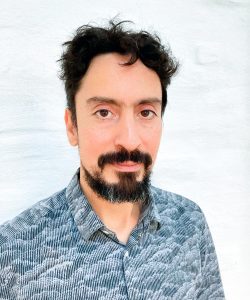 In his time-based media works, Rodríguez investigates various forms of narrativisation as processes of fictionalisation. He searches for artistic processes that move along a multiplicity of subjective perspectives and objective storytelling against the backdrop of media technologies and radical fiction. He studied Fine Arts at the Catholic University and Design at the University of San Francisco in Quito, Ecuador. He completed a master’s degree in video art and experimental film at the Academy of Media Arts Cologne and is currently a doctoral candidate at the Film University Babelsberg KONRAD WOLF. Rodríguez has worked as a lecturer at the Academy of Media Arts Cologne and as a live-video consultant at the Schauspielhaus Cologne. He currently works as a picture editor for the News Service Deutsche Welle, as a lecturer at the Weissensee School of Art and Design in Berlin, and as a freelance media artist and filmmaker. His work has been shown internationally at various festivals, museums and theatres, including CalArts, Kunstmuseum Bonn and Pact-Zollverein. He has received awards at the International Short Film Festival Oberhausen and the Videonale.
In his time-based media works, Rodríguez investigates various forms of narrativisation as processes of fictionalisation. He searches for artistic processes that move along a multiplicity of subjective perspectives and objective storytelling against the backdrop of media technologies and radical fiction. He studied Fine Arts at the Catholic University and Design at the University of San Francisco in Quito, Ecuador. He completed a master’s degree in video art and experimental film at the Academy of Media Arts Cologne and is currently a doctoral candidate at the Film University Babelsberg KONRAD WOLF. Rodríguez has worked as a lecturer at the Academy of Media Arts Cologne and as a live-video consultant at the Schauspielhaus Cologne. He currently works as a picture editor for the News Service Deutsche Welle, as a lecturer at the Weissensee School of Art and Design in Berlin, and as a freelance media artist and filmmaker. His work has been shown internationally at various festivals, museums and theatres, including CalArts, Kunstmuseum Bonn and Pact-Zollverein. He has received awards at the International Short Film Festival Oberhausen and the Videonale.
Justyna Kabala
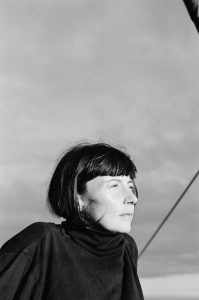 Justyna Kabala is an artist-filmmaker working on experimental and collaborative films with communities. Developing methodologies for sharing authorial control of creative projects through co-directing and collaborative filmmaking activities, her practice-based research aims to challenge the hierarchies and power relationships traditionally embedded in filmmaking and participatory practices.
Justyna Kabala is an artist-filmmaker working on experimental and collaborative films with communities. Developing methodologies for sharing authorial control of creative projects through co-directing and collaborative filmmaking activities, her practice-based research aims to challenge the hierarchies and power relationships traditionally embedded in filmmaking and participatory practices.
Utilising filmmaking as a tool for social engagement, these collaborative projects explore and expand on the experiences of the individuals and communities involved through the co-creation of moving image work. The projects build lasting relationships not only through filmmaking, but also ongoing dissemination activities in exhibitions, talks and film festival screenings, the collaborative films serve as part of a wider conversation with a broad range of audiences, organisations and other communities.
Born in Poland, Justyna lives and works in London, UK, and is a Senior Lecturer at London College of Communication, University of the Arts London.
Tamara Zumbühl
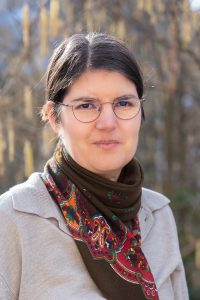 Tamara Zumbühl is an Artist and Filmmaker based in Lucerne. She studied General Linguistics, German Linguistics and German Literature at the University of Zurich and completed a Bachelor’s in Fine Arts and Art & Design Education and a Master’s in Film at the Lucerne University of Applied Sciences and Arts, where she is currently part of the research competence center Visual Narrative and the research Project Moving in Every Direction. In her artistic work, she mainly works with the media of film and photography, whereby materiality and old techniques play a major role. Her filmic work consists largely of found footage material, which she uses to tell new (fictional) stories. In addition to her artistic work, she is currently also preparing a practice-based PhD on narrative possibilities in audio-visual multi-channel installations.
Tamara Zumbühl is an Artist and Filmmaker based in Lucerne. She studied General Linguistics, German Linguistics and German Literature at the University of Zurich and completed a Bachelor’s in Fine Arts and Art & Design Education and a Master’s in Film at the Lucerne University of Applied Sciences and Arts, where she is currently part of the research competence center Visual Narrative and the research Project Moving in Every Direction. In her artistic work, she mainly works with the media of film and photography, whereby materiality and old techniques play a major role. Her filmic work consists largely of found footage material, which she uses to tell new (fictional) stories. In addition to her artistic work, she is currently also preparing a practice-based PhD on narrative possibilities in audio-visual multi-channel installations.
Christina Zimmermann
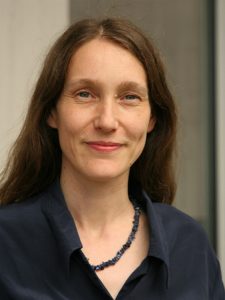 Christina Zimmermann (she/her) is a writer-director, researcher, and artist. She is a lecturer in the Master of Arts in Film programme (MA Film) and conducting an SNF Ambizione research project (2020-2024) on possibilities of digital representation in the realm of archival collections at the Lucerne University of Applied Sciences and Arts. Christina holds a practice-based PhD in Fine Arts, Art & Design, and Media Arts from Bauhaus University Weimar (2016, summa cum laude), and a Diploma in Audiovisual Media from the Academy of Media Arts Cologne (2004). She explores the influence of film and digital media on perception and knowledge. Currently, she is working on an interactive VR film about the film theorist, sociologist, and writer Siegfried Kracauer with Mira Film (Basel/Zurich) and INVR.SPACE (Berlin). Previously, has been working as a film curator for the Kassel Video and Documentary Film Festival. Christina lives with her family near Basel, Switzerland.
Christina Zimmermann (she/her) is a writer-director, researcher, and artist. She is a lecturer in the Master of Arts in Film programme (MA Film) and conducting an SNF Ambizione research project (2020-2024) on possibilities of digital representation in the realm of archival collections at the Lucerne University of Applied Sciences and Arts. Christina holds a practice-based PhD in Fine Arts, Art & Design, and Media Arts from Bauhaus University Weimar (2016, summa cum laude), and a Diploma in Audiovisual Media from the Academy of Media Arts Cologne (2004). She explores the influence of film and digital media on perception and knowledge. Currently, she is working on an interactive VR film about the film theorist, sociologist, and writer Siegfried Kracauer with Mira Film (Basel/Zurich) and INVR.SPACE (Berlin). Previously, has been working as a film curator for the Kassel Video and Documentary Film Festival. Christina lives with her family near Basel, Switzerland.
Ilja Mirsky
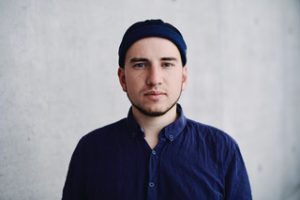 Ilja Mirsky studied Cognitive Sciences at the University of Tübingen, Political Science, Literature, and Psychology at the University of Haifa (Israel), and Performance Studies at the University of Hamburg. He teaches on intermedial theatre and digital dramaturgy at the Academy for Performing Arts Baden-Württemberg. From 2019 to 2022, he served as a dramaturg and occasionally as a programmer at the Institute for Theatrical Future Research (ITZ) in the Tübingen Zimmertheater. Since the 2022/2023 season, he has been a Digital Dramaturg and Dramaturg at the Residenztheater München (Bavarian State Theatre). For his ongoing Ph.D. on Digital Dramaturgy at the University of Tübingen and the Zurich University of the Arts (ZHdK), he focuses on the intertwining of digital technologies and new media, especially Virtual and Augmented Reality, and Artificial Intelligence in the field of Performing Arts.
Ilja Mirsky studied Cognitive Sciences at the University of Tübingen, Political Science, Literature, and Psychology at the University of Haifa (Israel), and Performance Studies at the University of Hamburg. He teaches on intermedial theatre and digital dramaturgy at the Academy for Performing Arts Baden-Württemberg. From 2019 to 2022, he served as a dramaturg and occasionally as a programmer at the Institute for Theatrical Future Research (ITZ) in the Tübingen Zimmertheater. Since the 2022/2023 season, he has been a Digital Dramaturg and Dramaturg at the Residenztheater München (Bavarian State Theatre). For his ongoing Ph.D. on Digital Dramaturgy at the University of Tübingen and the Zurich University of the Arts (ZHdK), he focuses on the intertwining of digital technologies and new media, especially Virtual and Augmented Reality, and Artificial Intelligence in the field of Performing Arts.
Jozef Masarik
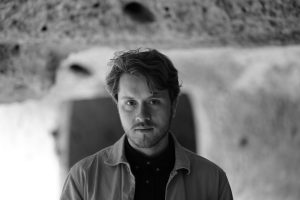 Jozef Eduard Masarik is an artist and researcher focusing on the issues concerning identity, technology and knowledge production. He graduated in Space and Communication from HEAD – Genève, Switzerland. Currently, he is a PhD. Candidate at the Slovak University of Technology in Bratislava, Slovakia and an assistant professor at the Academy of Fine Arts and Design in Bratislava, Slovakia. Hi artistic practice marked by research could be defined as a spatial practice of using video or other technological imagery and performance. He is equally active as theater scenographer and dramaturg.
Jozef Eduard Masarik is an artist and researcher focusing on the issues concerning identity, technology and knowledge production. He graduated in Space and Communication from HEAD – Genève, Switzerland. Currently, he is a PhD. Candidate at the Slovak University of Technology in Bratislava, Slovakia and an assistant professor at the Academy of Fine Arts and Design in Bratislava, Slovakia. Hi artistic practice marked by research could be defined as a spatial practice of using video or other technological imagery and performance. He is equally active as theater scenographer and dramaturg.
Isabella Pasqualini
 Isabella Pasqualini investigates the mutual and intimate relationship between body and space using immersive and interactive multimedia and a focus on the multisensory enhancement of the user’s horizon. For her post-doc project Visual Touches – Touching Views at the Bertarelli Center of Neuroprosthetics (EPFL 2013-16), she obtained a prestigious fellowship grant from the Cogito foundation. In 2004, Isa founded her independent design and research studio. She has planned a new city in Angola and built a temporary bank in Luanda. Isabella has a PhD in architecture and cognitive neuroscience (EPFL 2012). Currently, she is a senior scientist at the CC Visual Narrative of Lucerne University of Applied Sciences and Arts (HSLU) and a faculty member at the first Master for Neuroscience Applied to Architectural Design (NAAD) at the IUAV University of Venice.
Isabella Pasqualini investigates the mutual and intimate relationship between body and space using immersive and interactive multimedia and a focus on the multisensory enhancement of the user’s horizon. For her post-doc project Visual Touches – Touching Views at the Bertarelli Center of Neuroprosthetics (EPFL 2013-16), she obtained a prestigious fellowship grant from the Cogito foundation. In 2004, Isa founded her independent design and research studio. She has planned a new city in Angola and built a temporary bank in Luanda. Isabella has a PhD in architecture and cognitive neuroscience (EPFL 2012). Currently, she is a senior scientist at the CC Visual Narrative of Lucerne University of Applied Sciences and Arts (HSLU) and a faculty member at the first Master for Neuroscience Applied to Architectural Design (NAAD) at the IUAV University of Venice.
www.isapasqualini.com
Julia Dufek
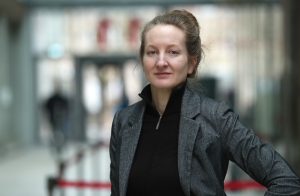
Julia Dufek, born in West Berlin, spent her formative years in southern Africa. She earned an International Baccalaureate (IB) at UWCSA Waterford Kamhlaba. Returning to Germany, she studied animation at HFF Konrad Wolf, focusing on digital and analogue 3D animation. After working as a 3D character animator, she joined Filmuniversity Babelsberg Konrad Wolf’s animation department. There, she taught production processes and mediated technological systems, including motion capture, 3D printing, and photogrammetry. Her hybrid orientation led her to a scientific-artistic PhD journey in 2017. Her research explored three-dimensional figurative art methodologies, emphasizing embodied cognition. She developed a photogrammetry system for digitizing analogue stop-motion animation. In January 2024, she defended her scientific-artist doctoral thesis and is preparing its publication.
Ruth Anderwald + Leonhard Grond
Ruth Anderwald + Leonhard Grond have worked collectively as artists, artist-curators, and artist-researchers since 1999, and currently share the professorship for the Artistic Research PhD Program PhD in Art at the University of Applied Arts Vienna. Within their co-creative artistic-research practice, they develop theory-led and practice-oriented artistic research on dizziness. Within their topic of dizziness, Ruth and Leonhard are researching the social, affective, somaesthetic and sensory impact and epistemic potential of this state, the navigation of aporetic situations within artistic and arts-based research practice, the potential for epistemic solidarity in cross- and transdisciplinary contexts. Further, Ruth and Leonhard conduct intergenerational arts-based research on resistance against fascisms, exploring the transdisciplinary and transformative potential of remembrance cultures.
Maia Gusberti
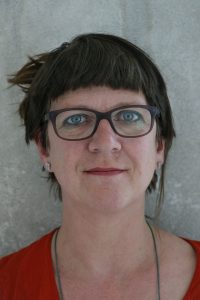 Maia Gusberti, *1971, works as a visual artist in Bern. She studied ‘Media Arts’ (University of Applied Arts, Vienna) and ‘Critical Images’ (Royal Institute of Arts, Stockholm). She is as a research associate at HSLU DFK and a doctoral candidate at the KU Leuven/LUCA-School of Arts Gent and HSLU. Her work questions lens-based images, their materiality and framing through de/reconstruction and transformations between static and moving image media. In her process-orientated fragmentary assemblages, essayistic layouts, installations and video works, urban landscapes form the visual background for socio-political «re- imaginations». Gusberti’s practice includes curatorial projects such as the film program ‘Komplexe Bilder’ (Kino REX, Bern) or the exhibition ‘Choreography of the image’ (Kunsthalle Exnergasse, Vienna). She lived and worked in Vienna, Cairo, Brussels and Bern and repeatedly visited the Middle East as an artist in residence. Her work has won awards and is presented internationally in exhibitions, conferences and at festivals.
Maia Gusberti, *1971, works as a visual artist in Bern. She studied ‘Media Arts’ (University of Applied Arts, Vienna) and ‘Critical Images’ (Royal Institute of Arts, Stockholm). She is as a research associate at HSLU DFK and a doctoral candidate at the KU Leuven/LUCA-School of Arts Gent and HSLU. Her work questions lens-based images, their materiality and framing through de/reconstruction and transformations between static and moving image media. In her process-orientated fragmentary assemblages, essayistic layouts, installations and video works, urban landscapes form the visual background for socio-political «re- imaginations». Gusberti’s practice includes curatorial projects such as the film program ‘Komplexe Bilder’ (Kino REX, Bern) or the exhibition ‘Choreography of the image’ (Kunsthalle Exnergasse, Vienna). She lived and worked in Vienna, Cairo, Brussels and Bern and repeatedly visited the Middle East as an artist in residence. Her work has won awards and is presented internationally in exhibitions, conferences and at festivals.
Alisi Telengut
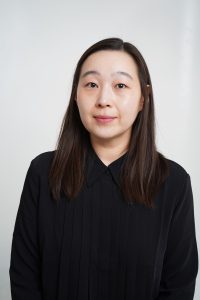 Alisi Telengut is a Canadian artist of Mongolian roots, living between Berlin, Germany and Tiohtià:ke/Montréal, Canada. Telengut is an award-winning animation filmmaker and her work has been screened and exhibited internationally, such as at the Academy Museum of Motion Pictures, Sundance Film Festival, TIFF, Annecy International Animation Festival, Biennial VIDEONALE at Kunstmuseum Bonn, OSTRALE Biennale, Whitney Biennial 2024, among others.
Alisi Telengut is a Canadian artist of Mongolian roots, living between Berlin, Germany and Tiohtià:ke/Montréal, Canada. Telengut is an award-winning animation filmmaker and her work has been screened and exhibited internationally, such as at the Academy Museum of Motion Pictures, Sundance Film Festival, TIFF, Annecy International Animation Festival, Biennial VIDEONALE at Kunstmuseum Bonn, OSTRALE Biennale, Whitney Biennial 2024, among others.
Telengut is a newly hired tenure-track assistant professor at Concordia University (Montreal, Canada). She is a PhD candidate at Film University Babelsberg KONRAD WOLF (Potsdam, Germany).
Assel Kadyrkhanova
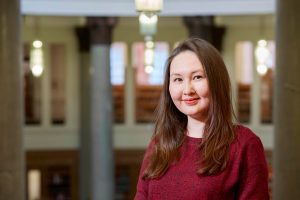 Assel Kadyrkhanova is a visual artist and postdoctoral research fellow at the Amsterdam School for Cultural Analysis, University of Amsterdam. She holds a PhD from the University of Leeds and an MFA from Newcastle University.
Assel Kadyrkhanova is a visual artist and postdoctoral research fellow at the Amsterdam School for Cultural Analysis, University of Amsterdam. She holds a PhD from the University of Leeds and an MFA from Newcastle University.
Kadyrkhanova’s artistic research looks at art as a medium of memory, with a specific focus on cultural memory and trauma in post-Soviet Kazakhstan. She works across drawing, textile, moving image and installation art. In her work, she seeks to touch upon traces of transgenerational traumas and address narratives that persist in postcolonial and post-totalitarian societies.
She has exhibited internationally and disseminated her research through publications, artist talks, and conferences. Her hand-drawn animation film All the Dreams We Dream (2020) was screened at Documenta 15, Kassel, as part of the Davra Collective public programme. Other recent exhibitions and screenings include Medium and Memory (London, 2023), Clouds, Power, and Ornament (Hongkong, 2023), Samizdat Eastern European Film Festival (Glasgow, 2023), goEast Film Festival (Wiesbaden, 2023).
Kathi Kaeppel
Kathi Kæppel (*1977 in Heidelberg) teaches and researches as a visiting professor for the design of the moving image at the Berlin University of the Arts. She previously taught at the weißensee kunsthochschule berlin, the Burg Giebichenstein Kunsthochschule Halle, and the Lucerne University of Applied Sciences and Arts Design, Film & Art, among others. She will join the Folkwang University of the Arts as Professor of Moving Image in April 2024.
Kathi Kæppel has received numerous awards, film, and project grants, and scholarships from the DAAD, the Fulbright Commission, and the Freedom Foundation. At the center of Kathi Kæppel’s artistic practice lies the creation and artistic use of the moving image. Since 2018, her artistic work has been embedded in a scientific-artistic doctorate at the Film University Babelsberg KONRAD WOLF, as well as in the interdisciplinary research project at the Lucerne School of Art and Design ‘Moving in Every Direction—Artistic Research as a Contribution to the Development of Current Spatial Configurations for the Moving Image’.
Sylvie Boisseau and Frank Westermeyer
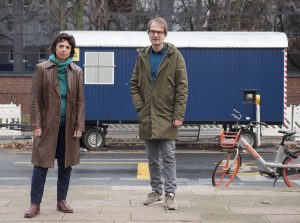 Under the name Boisseau/Westermeyer, the artists collaborate on video installations and films (among other artistic works) that are exhibited and screened at art centres and festivals internationally. Frank Westermeyer is associated professor at HEAD – Genève and responsible or the Information Fiction program. Recent publication (together with David Zerbib) Playing at being human. Between AI, animal and plant life: an artistic and philosophical experimentation (e-book, Naima éditions / HEAD, 2021). They live and work in Berlin and Geneva.
Under the name Boisseau/Westermeyer, the artists collaborate on video installations and films (among other artistic works) that are exhibited and screened at art centres and festivals internationally. Frank Westermeyer is associated professor at HEAD – Genève and responsible or the Information Fiction program. Recent publication (together with David Zerbib) Playing at being human. Between AI, animal and plant life: an artistic and philosophical experimentation (e-book, Naima éditions / HEAD, 2021). They live and work in Berlin and Geneva.
David Zerbib
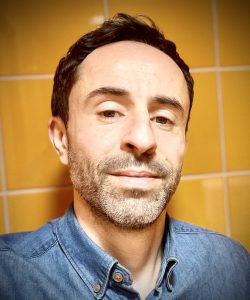 David Zerbib is a philosopher and an art critic. A lecturer in Philosophy of Art at the Haute École d’Art et de Design, Geneva (HEAD – Genève) his research focuses on contemporary aesthetics and in particular on the questions of performance and performativity, as well as on the issue of formats. His publications include Performance Studies in Motion. International perspectives and practices (with A. Citron and S. Aronson-Lehavi, Bloomsbury, London, 2014), or In octavo. Des formats de l’art (Presses du réel – ESAAA, 2015). He is also currently editing, with Jean-Paul Thibaud and Nicolas Tixier, Ambiances. A sensitivity to Ordinary Situations (Routledge, Series «Ambiances, Atmospheres and Sensory Experiences of Spaces», to be published in 2024).
David Zerbib is a philosopher and an art critic. A lecturer in Philosophy of Art at the Haute École d’Art et de Design, Geneva (HEAD – Genève) his research focuses on contemporary aesthetics and in particular on the questions of performance and performativity, as well as on the issue of formats. His publications include Performance Studies in Motion. International perspectives and practices (with A. Citron and S. Aronson-Lehavi, Bloomsbury, London, 2014), or In octavo. Des formats de l’art (Presses du réel – ESAAA, 2015). He is also currently editing, with Jean-Paul Thibaud and Nicolas Tixier, Ambiances. A sensitivity to Ordinary Situations (Routledge, Series «Ambiances, Atmospheres and Sensory Experiences of Spaces», to be published in 2024).
Rosa Prosser
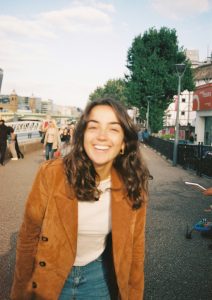 Rosa Prosser is an artist filmmaker from the Lake District, UK. Her practice seeks to explore human//more-than-human encounters and entanglements through the methodology of “sensory ecological ethnography”, a site-specific and embodied approach towards research(ing), communicated predominantly through the medium of moving images. Having graduated from the University of Cambridge in 2021 with a BA in the History and Philosophy of Science, she is currently based in London completing an MFA in Creative Documentary by Practice with(in) UCL’s Public Anthropology department.
Rosa Prosser is an artist filmmaker from the Lake District, UK. Her practice seeks to explore human//more-than-human encounters and entanglements through the methodology of “sensory ecological ethnography”, a site-specific and embodied approach towards research(ing), communicated predominantly through the medium of moving images. Having graduated from the University of Cambridge in 2021 with a BA in the History and Philosophy of Science, she is currently based in London completing an MFA in Creative Documentary by Practice with(in) UCL’s Public Anthropology department.
Klearjos Eduardo Papanicolaou
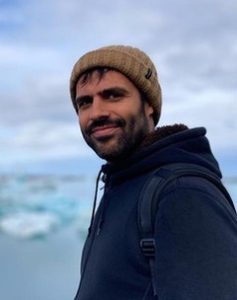 Klearjos Eduardo Papanicolaou, currently a Doctoral student at the Swiss Federal Institute of Technology Zurich (ETHZ) Department of Architecture, is a filmmaker and urban sociologist born in Mexico City and raised in Chile and the United States. He holds a Bachelor’s Degree in Philosophy and English Literature from the University of Sussex, a Master’s Degree in Sociology from the London School of Economics and Political Science, and has studied filmmaking in Denmark. He specializes in urban and sensory ethnographic filmmaking, and has directed numerous experimental, ethnographic and documentary films, including ‘The Seven Sisters Indoor Market’ (2016, with Marios Kleftakis), ‘The Disappearance of Robin Hood’ (2018, with Urban-Think Tank) and ‘Not Just Roads’ (2020, with Nitin Bathla), the latter of which won the Society of Architectural Historians’ (SAH) 2022 Film and Video Award. Alongside his Doctoral studies, he teaches audiovisual ethnography as a spatial research tool at the ETHZ.
Klearjos Eduardo Papanicolaou, currently a Doctoral student at the Swiss Federal Institute of Technology Zurich (ETHZ) Department of Architecture, is a filmmaker and urban sociologist born in Mexico City and raised in Chile and the United States. He holds a Bachelor’s Degree in Philosophy and English Literature from the University of Sussex, a Master’s Degree in Sociology from the London School of Economics and Political Science, and has studied filmmaking in Denmark. He specializes in urban and sensory ethnographic filmmaking, and has directed numerous experimental, ethnographic and documentary films, including ‘The Seven Sisters Indoor Market’ (2016, with Marios Kleftakis), ‘The Disappearance of Robin Hood’ (2018, with Urban-Think Tank) and ‘Not Just Roads’ (2020, with Nitin Bathla), the latter of which won the Society of Architectural Historians’ (SAH) 2022 Film and Video Award. Alongside his Doctoral studies, he teaches audiovisual ethnography as a spatial research tool at the ETHZ.
Jürgen Buchinger
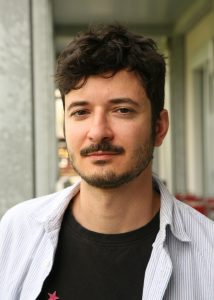
Jürgen Buchinger studied History of Art, Philosophy and French Language at the University of Vienna. After working as an art historian for several years, he started a master’s in film at the School of Arts and Design in Lucerne and graduated with a multi-channel video installation. He is currently working on a practice-based PhD-project on the transformation of public space through moving image interventions at the Lucerne School of Art and Design and the University of Art in Linz, funded by the Swiss National Science Foundation. He is co-founder of the video collective Umkämpftes Basel and member of the activist group Stadt für Alle as well as the Swiss artist’s association Visarte.
Jürgen Buchinger’s artistic practice encompasses a wide range of media from video installations to social interaction and collaborative works as well as interventions in public space. His works have been exhibited in several European countries.
Jürgen Buchinger is a researcher, artist, and activist and lives and works in Basel, Switzerland.
J.P. Sniadecki
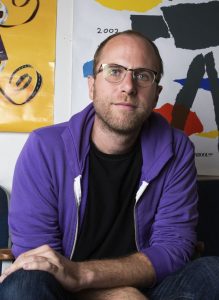 J.P. Sniadecki works between the US and China as a filmmaker and anthropologist. From Chengdu demolition sites to New York City junkyards to the Sonoran Desert borderlands, he collaborates with people and places to explore film’s capacity for transfiguration of the discarded and transgression of the status quo. His films are in the permanent collection of New York ’s Museum of Modern Art and the San Francisco Museum of Modern Art, and have been exhibited there and at the Whitney Biennale, the Shanghai Biennale, the Shenzhen Biennale, and the Guggenheim, as well as at international film festivals such as Berlin, BFI London, Locarno, New York, AFI, San Francisco, Rotterdam, Viennale, IDFA, Mar del Plata, Taiwan International Documentary Festival, and more.
J.P. Sniadecki works between the US and China as a filmmaker and anthropologist. From Chengdu demolition sites to New York City junkyards to the Sonoran Desert borderlands, he collaborates with people and places to explore film’s capacity for transfiguration of the discarded and transgression of the status quo. His films are in the permanent collection of New York ’s Museum of Modern Art and the San Francisco Museum of Modern Art, and have been exhibited there and at the Whitney Biennale, the Shanghai Biennale, the Shenzhen Biennale, and the Guggenheim, as well as at international film festivals such as Berlin, BFI London, Locarno, New York, AFI, San Francisco, Rotterdam, Viennale, IDFA, Mar del Plata, Taiwan International Documentary Festival, and more.
JP serves on the editorial board of the Chinese Independent Cinema Observer journal, and he co-founded the traveling screening series «Cinema on the Edge,» which showcases independent Chinese film around the world. He has also written articles for Cinema Scope, Visual Anthropology Review, and the edited volume DV-Made China. A 2017 Guggenheim Fellowship recipient, J.P. earned a PhD at Harvard and is Professor in the Radio/TV/Film Department at Northwestern University, where he directs the MFA in Documentary Media program and the Buffett Institute’s Climate Crisis + Media Arts Working Group.
Joshua Bonnetta
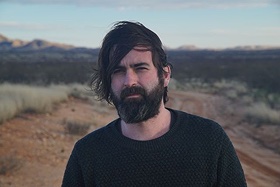 Associate Professor Joshua Bonnetta is a Canadian artist and filmmaker working at the edges of documentary across installation, performance, and traditional theatrical exhibition. His film works have been exhibited at the Berlin Film Festival, MOMA, Toronto International Film Festival, Institute for Contemporary Art London, BFI London Film Festival, Whitechapel Gallery, Barbican Centre, International Documentary Festival Amsterdam,Vienna International Film Festival, Cinéma du Réel, Rotterdam International Film Festival, New York Film Festival, Hong Kong International Film Festival, American Film Institute: AFI-Docs, San Francisco International Film Festival, Dokfest Munich, RIDM. Montreal International Documentary Festival, amongst various other festivals, museums, and galleries throughout the world. His works have been written about in The New York Times, The Guardian, Sight & Sound, Art Forum, Frieze, and Cinemascope.
Associate Professor Joshua Bonnetta is a Canadian artist and filmmaker working at the edges of documentary across installation, performance, and traditional theatrical exhibition. His film works have been exhibited at the Berlin Film Festival, MOMA, Toronto International Film Festival, Institute for Contemporary Art London, BFI London Film Festival, Whitechapel Gallery, Barbican Centre, International Documentary Festival Amsterdam,Vienna International Film Festival, Cinéma du Réel, Rotterdam International Film Festival, New York Film Festival, Hong Kong International Film Festival, American Film Institute: AFI-Docs, San Francisco International Film Festival, Dokfest Munich, RIDM. Montreal International Documentary Festival, amongst various other festivals, museums, and galleries throughout the world. His works have been written about in The New York Times, The Guardian, Sight & Sound, Art Forum, Frieze, and Cinemascope.
Yves Regenass
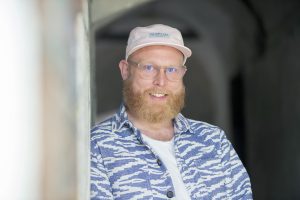
Yves Regenass is a cultural scientist and freelance theater maker (dramaturgy, direction, performance). He co-founded the gametheater group machina eX and works regularly with the Ticino group Trickster-P. Yves is an expert in game design for theater and digital dramaturgy. Yves worked at the theatre Chur where he was responsible for a digital transformation project. He is interested in the development of unusual forms of theater and lectures at various universities in Switzerland and abroad. For the Haus der elektronischen Künste Basel he is regularly developing workshop formats.
